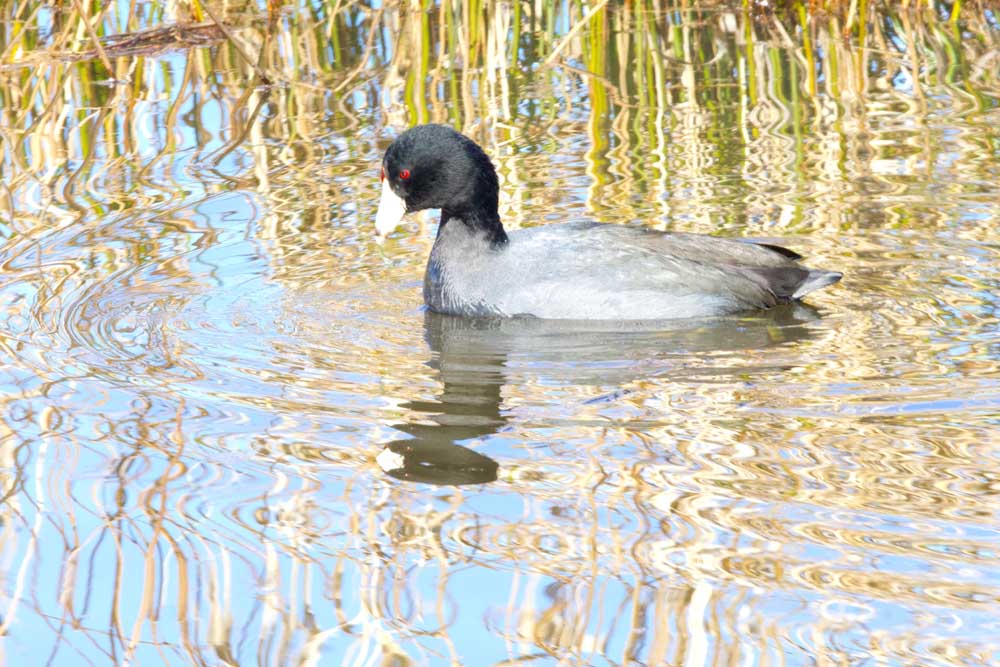Results of the GBBC 2025 and other birding news
Published 2:30 pm Monday, March 17, 2025

- American coots are being seen in relatively small numbers right now. They can be seen in the wetlands, Willapa Bay and the harbors.
Some GBBC Preliminary Results
The world connected to birds this past Feb.14-17. For four days people spent time in their favorite places watching birds for at least 15 minutes and sometimes more on one of the days or as many of the four count days as they wished.
The purpose of the Great Backyard Bird Count (GBBC) is to help scientists better understand global bird populations just before spring migration begins by providing a snapshot at that point in time. The information submitted becomes part of a database that scientists use to better understand trends in the size of bird populations, range expansions, shifts in migration patterns, and changes in habitat. This major citizen-science project is led by the Cornell Lab of Ornithology, the National Audubon Society and Birds Canada.
Preliminary results of the count indicate that at least 7,910 different species of birds were counted for the world. Birders from 253 nations and subregions participated. American birders submitted over 163,000 eBird checklists, followed by Canadian birders with over 21,000 eBird checklists. Mexican birders reported a total of 785 species, while U.S. birders reported 670 species and Canadians reported 247.
In South America, Colombia tallied 1,374 species to lead the continent — and the world. In Asia, India led with 1,084 species, while birders in Kenya led Africa with 695 species. Australian birders reported 609 species.
March Winter Raptor Survey
The weather was perfect, no wind or rain. There was a cloud cover for part of the day, but sunshine dominated the sky in the afternoon. Five species of raptors were seen.
Bald eagles were plentiful on the beach. Slightly fewer numbers were seen on the land side of the Peninsula. In total for the entire route, adults numbered 28 and sub-adults were almost equal at 24. Most on the beach were feeding on carrion, but many were sitting on eagle perches watching and waiting for their next meal or sitting on the beach after eating or waiting their turn.
Six red-tailed hawks were observed with four of them observed on the Willapa National Wildlife Refuge along with a pair of American kestrels perched on utility wires. I think they were dating online!
Three bald eagles, one red-tailed hawk and one northern harrier were counted in Oysterville, and Seaview produced a sharp-shinned hawk. It was an excellent raptor count even though we did not see a peregrine falcon for the second survey in a row.
Other sightings
There seems to be an influx of Eurasian collared-doves. They were everywhere, it seemed, sitting on treetops or on utility wires. They are common during most of the year, but it seems like there were more the last few weeks than I usually see.
Brewer’s blackbirds were also everywhere. Small flocks have been seen at the harbors. Northern flickers have been more numerous during the last week or so as well. Male red-winged blackbirds are still singing their hearts out. Their female counterparts still hadn’t arrived by the end of last week.
A few of us have been hearing our first song sparrows singing their melodious song. Pacific wrens are singing as well and red crossbills are twittering high up in the evergreens. Northern pintail and American wigeon are lounging along the shores of Willapa Bay accompanied by a few mallards and American coots. Hooded mergansers are still being seen in the Ilwaco harbor and the outer harbor way. The number of hummingbirds vying for nectar is increasing. We are up to eight feisty hummers all competing for spots at one of the feeders.
Spring migration will soon begin in earnest. Grab those binoculars and keep your eyes peeled for the renewal of spring and the birds it brings. Happy birding!
“Common Birds of the Long Beach Peninsula,” by Kalbach and Stauffer, is available from the Bay Avenue Gallery, Time Enough Books and the Pacific County Museum in South Bend.









